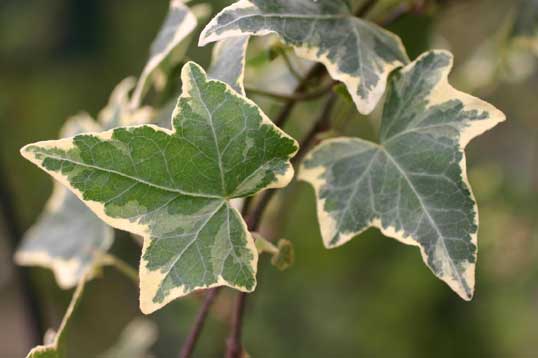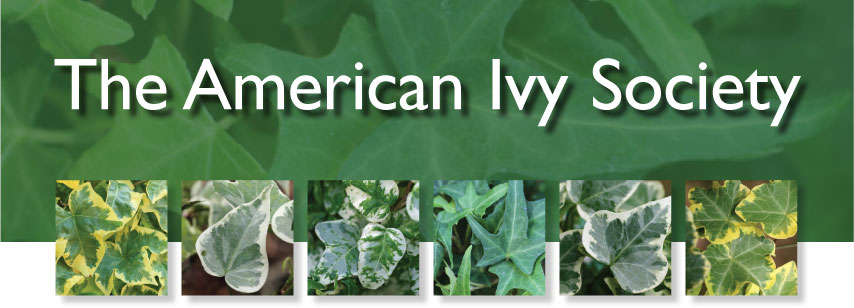|
Ivy of the Year 2008
Hedera helix 'Gold Child'

Photo Rachel Cobb
The American Ivy Society has selected Hedera helix ‘Gold Child’ as the ivy of the year for 2008.
This beautiful gold variegated ivy, has proven to be a very useful ivy, whether in the home or in the garden. Hedera helix ‘Gold Child’ was first introduced in 1971 by Thomas Rochford from the House of Rochford, England, and received the Royal Horticultural Society’s Award of Merit. This ivy first appeared in the US in the early 1980’s where it quickly became popular with the commercial growers.
‘Gold Child’s’ leaves have three to five lobes with rounded tips. The variegation is a bright gold margin with a green to green gray center. The brightness of the variegation is temperature dependent. In cooler temperatures the color is a very intense gold but in warmer weather the color can fade to butter yellow. The color is also not as intense if grown in the shade but the variegation is still prominent.
You may find an ivy with the name Hedera helix ‘Gold Baby’, in stores but don’t let the name fool you. We have grown this ivy side by side with ‘Gold Child’ and have found no difference. Since the name ‘Gold Child’ is the older name, they should be considered the same plant.
This ivy makes a great houseplant where it makes long runners. It has also proven to be a great out door ivy where it has been successfully grown in hardiness zone 5 and 6, -10 to -20 degrees (F.) for over 20 years. Variegated ivies tend to show more winter damage so care should be used to plant them in colder climates in a more protected spot. When leaves are damaged in winter they are quickly shed when the new growth starts in the spring.
When planting outdoors, remember to plant ivies deep, removing several of the lower leaves, and planting to the new lowest leaves. Ivies will root along this new stem allowing the ivy to better establish into the new planting. When possible, especially with variegated ivies, plant them were they will be protected from the winter sun and wind which causes the most winter damage.
Click Here for Press Photo
"Ivy of the Year"
Because of the surge in popularity of ivy as a pot plant as well as in the garden, The American Ivy Society announced it will select an "Ivy of the Year" annually commencing in 2001. The ivy chosen from the nominees must be easy to grow, hardy, lush, beautiful, and not invasive in the garden.
The "Ivy of the Year" will be chosen by a committee made up of members of The American Ivy Society, nurseryman and growers across the United States. Each ivy will have completed the three year trial period in The American Ivy Society test gardens as well as in commercial nurseries.
When The American Ivy Society was founded in 1974 there were approximately 60 different cultivars of Hedera (Ivy) grown commercially. Today there are over 480 named cultivars. The intense interest in ivy began when people learned that the new ivies are available in an array of colors ranging from all shades of green, green and white to yellows and golds - and they are not invasive as were many of the older cultivars. Some ivy leaves are so delicately cut they resemble the print a bird's foot makes in the sand, while others are curly or fan shaped. They are used as groundcovers, garden specimens, hanging baskets, mixed containers, topiary and the adult forms of ivy are even grown as shrubs.

| 
